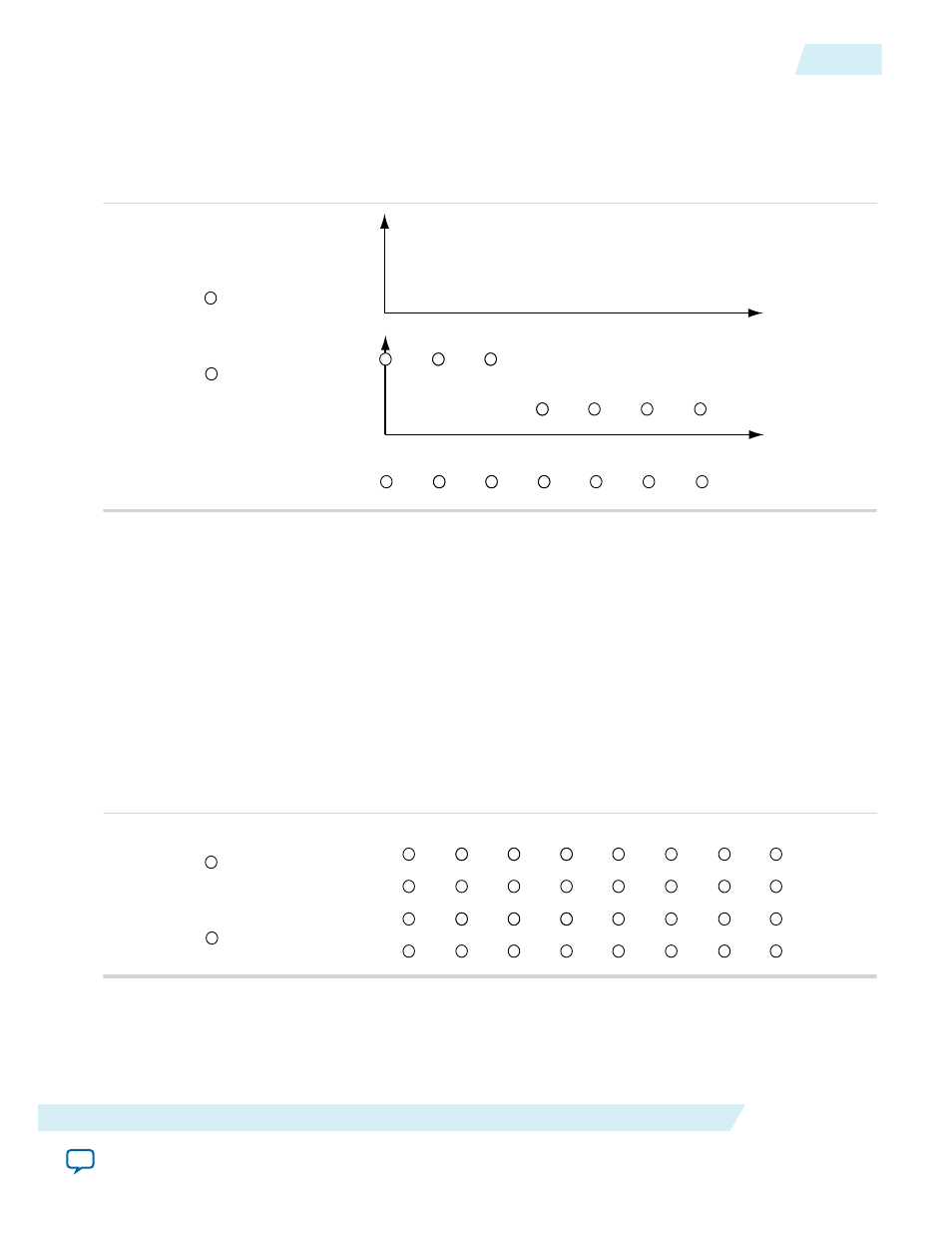Vertical resampling (4:2:0), Vertical resampling (4:2:0) -3 – Altera Video and Image Processing Suite User Manual
Page 124

Figure 7-2: 4:2:2 Data at an Edge Transition
The figure below shows 4:2:2 data at an edge transition. Without taking any account of the luma, the
interpolation to produce chroma values for sample 4 would weight samples 3 and 5 equally. From the
luma, you can see that sample 4 falls on an the low side of an edge, so sample 5 is more significant than
sample 3.
1
2
3
4
Sample No
5
6
7
++
++
++
++
= Y’
+
= Cb
+
= Cr
++
= CbCr
++
= Y’CbCr
Y’ Intensity
CbCr Color
Value
++
++
++
++
The luma-adaptive mode looks for such situations and chooses how to adjust the interpolation filter.
From phase 0, it can shift to -1/4, 0, or 1/4; from phase 1/2, it can shift to 1/4, 1/2, or 3/4. This makes the
interpolated chroma samples line up better with edges in the luma channel and is particularly noticeable
for bold synthetic edges such as text. The luma-adaptive mode does not use memory or multipliers, but
requires more logic elements than the straightforward filtered algorithm.
Vertical Resampling (4:2:0)
The Chroma Resampler IP core does not distinguish interlaced data with its vertical resampling mode. It
only supports the co-sited form of vertical resampling.
Figure 7-3: Resampling 4.4.4 to a 4.2.0 Image
The figure below shows the co-sited form of vertical resampling.
1
2
3
4
1
2
Sample No
5
6
7
8
++
++
++
++
3
4
= Y’
+
= Cb
+
= Cr
++
= CbCr
++
= Y’CbCr
++
++
++
++
For both upsampling and downsampling, the vertical resampling algorithm is fixed at nearest-neighbor.
The algorithm does not use any multipliers.
• Upsampling—uses four line buffers, each buffer being half the width of the image.
• Downsampling—uses one line buffer, which is half the width of the image.
UG-VIPSUITE
2015.05.04
Vertical Resampling (4:2:0)
7-3
Chroma Resampler IP Core
Altera Corporation